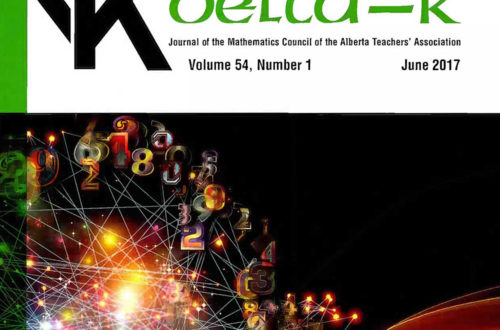From the Editor’s Pencil
What Are We Teaching?
Recently, a former student came to me with an assignment that had been handed out to all the members of the Grade 7/8/9 Paced Learning Program class. The assignment read as follows:
You will create a NEW playground for your community.
You only have 3000 sq feet to work with, and you need to be very creative.
Your playground MUST have a certain THEME and NAME.
You must choose a specific type of ground covering and use it to cover the 3000 sq feet you are using. You must have a border of 3000–3500 sq feet. Do not be smaller or bigger.
Try to make your playground as unique and creative as you can.
Marks are awarded for creativity.
You may spend as much as you want, but you have to keep track of what you spend on a separate sheet of paper.
All costs associated with the playground structures must be accounted for.
Marks will be awarded to the assignments that are as close to “real costs” as possible.
BE CREATIVE
MAKE IT INTERESTING
MAKE IT COLOURFUL
MAKE IT REAL
MAKE IT NEAT
USE A RULER
USE A RULER
USE A RULER
FOLLOW DIRECTIONS!
Mark is out of 100:
- 20 neatness
- 20 realistic/measuremets [sic]
- 10 colour
- 10 price list
- 40 creativity
The assignment was presented as an area problem, and the students were given 10 days to complete it. No external resources, such as catalogues or measurements for various pieces of playground equipment, were provided. Although graph paper was provided, the students were instructed that the squares “don’t mean anything.”
When I first read the assignment, several things immediately popped out at me, both mathematically and grammatically, and I questioned the student
to determine how much the student understood.
I found that the student could not finish the assignment without intensive parental involvement, even though it was to have been completed in class. I was dismayed.
After my initial reaction, I began to wonder if the students in my Grade 3 class could find some of the errors in the assignment. I presented part of it to them the next day.
Almost every child identified feet as an error. We checked with my 24-year-old son to find out if he had learned about feet in school in the 1980s, and he assured us that he had not.
The second problem was more subtle and required closer examination to find, but my students eventually discovered that the border (or perimeter) of the playground was to be measured in square feet. They all chorused, “You don’t measure perimeter in squares!”
It is incumbent upon us all, as committed math educators, to be aware of what is being presented to our students under the guise of math learning. When we find things like this assignment, are we not just as guilty of perpetrating a wrong against the students if we do nothing to assist those teachers who cannot see the unreasonableness of the activities and assignments they present?
Anne MacQuarrie
From the Editor’s Laptop
Anne MacQuarrie
President’s Message
Janis Kristjansson
Alberta Education Update
Conference 2006
Call for Proposals
PSAC Grant Program for Schools in Small Communities
Debra McAdam
MCATA Awards
2006 Census Teacher’s Kit
Spring Leadership Symposium Teaser



